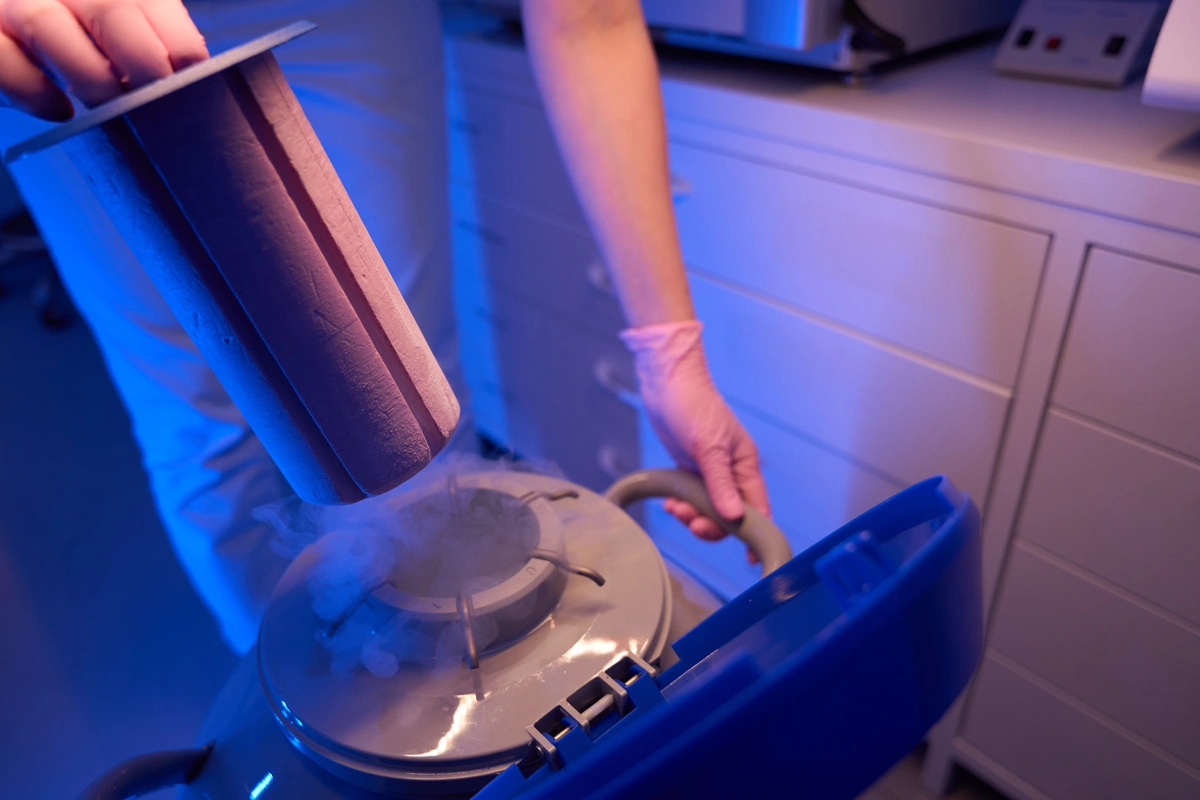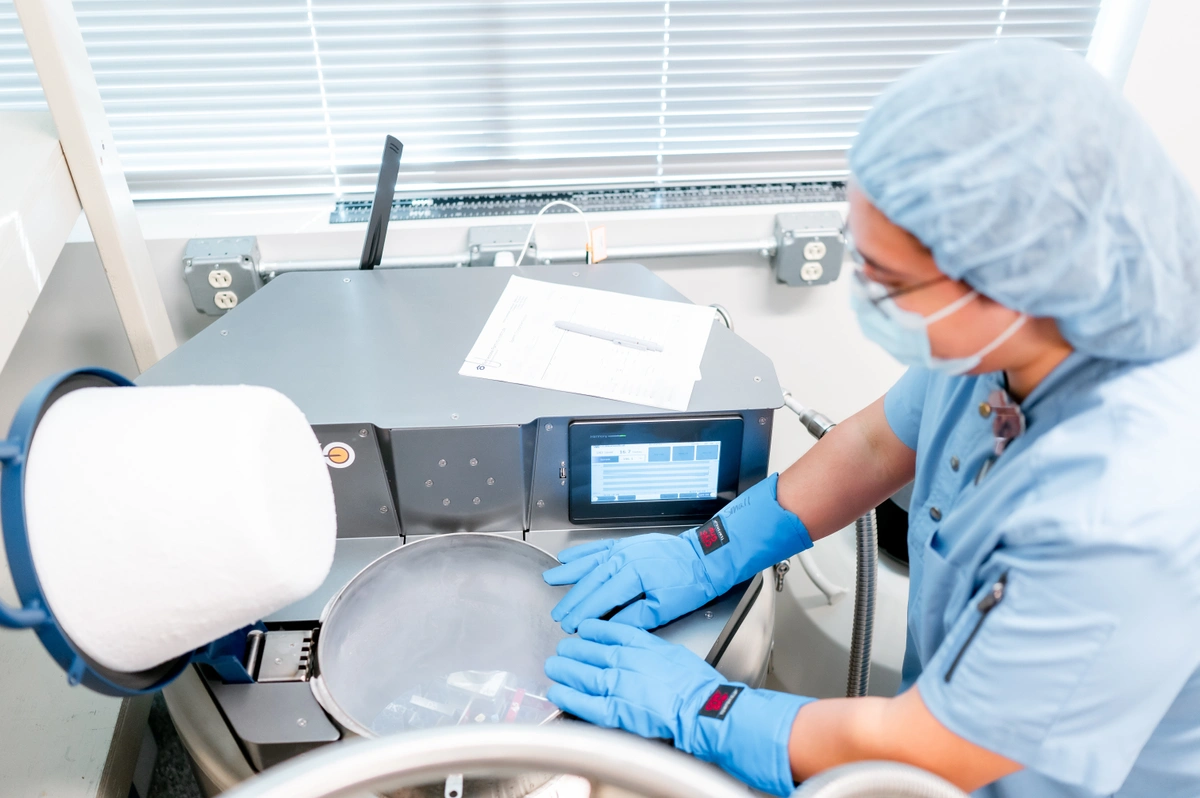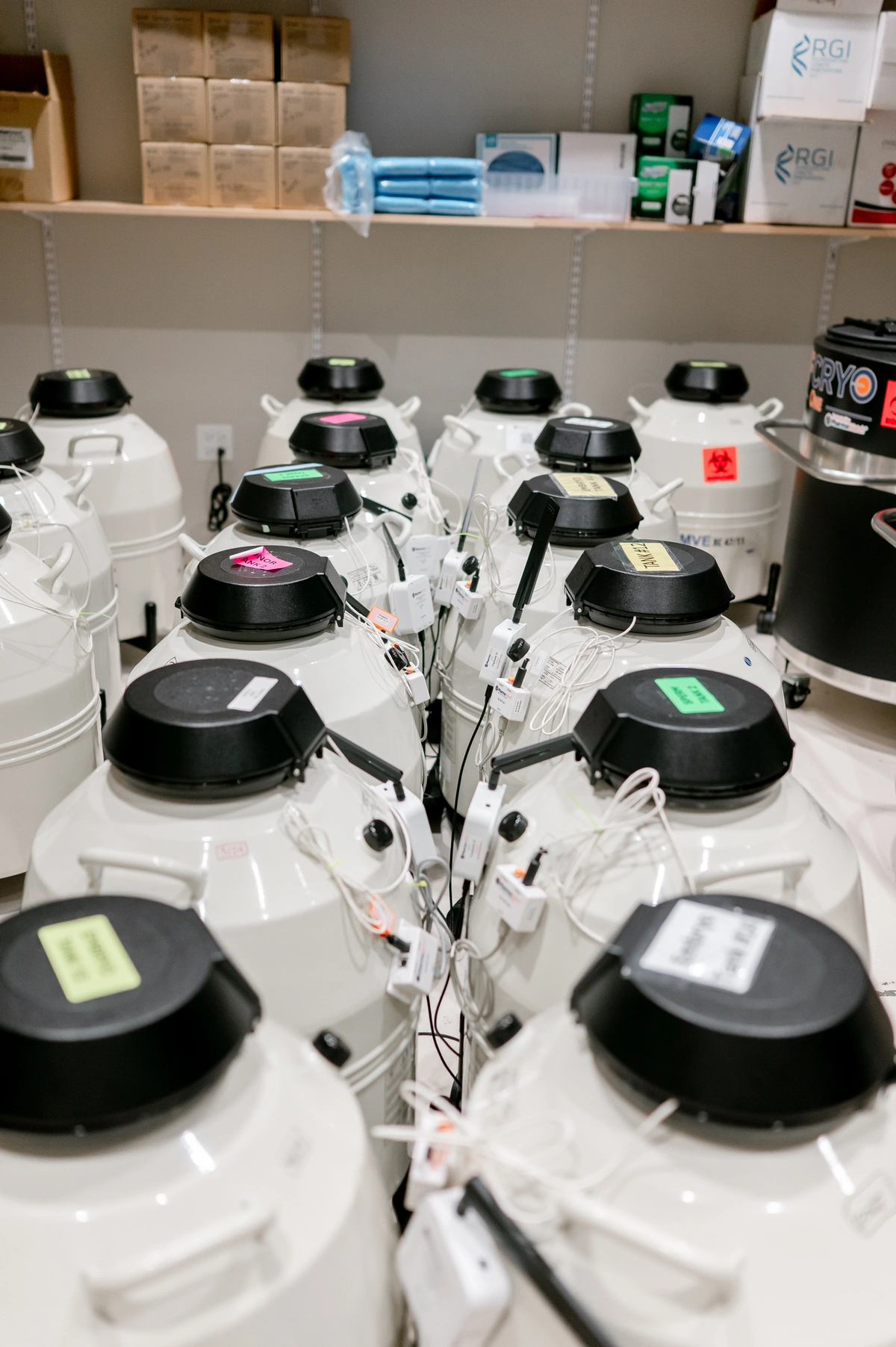
Vitrification and How It Changed Fertility Care Forever
When you think about how far fertility science has come, few advancements stand out quite like vitrification — a flash-freezing technique that transformed the way we preserve eggs, embryos, and even sperm.
Before vitrification, egg freezing was unpredictable and less effective. Today, thanks to this breakthrough technology, more people than ever are preserving their fertility and building families on their own timelines — with confidence in the science behind it.
The Science of Vitrification
Vitrification is an ultra-rapid freezing method that cools eggs or embryos at such high speed that water inside the cells solidifies into a glass-like state — without forming damaging ice crystals. This is what sets vitrification apart from the older, slower freezing method that made egg preservation far less reliable.
“With vitrification, the egg freezes so quickly that ice crystals don’t have time to form,” says Dr. John Jarrett, Reproductive Endocrinologist, Infertility Specialist, and Medical Director of Indiana Fertility Institute. “When the woman is ready to try pregnancy, the thawed eggs can be fertilized using intracytoplasmic sperm injection (ICSI), a technique that injects one sperm directly into one egg.”
Because ice crystals are what often damaged cells in the past, avoiding them is key to protecting the egg's internal structure and DNA integrity.
During vitrification, eggs or embryos are rapidly cooled using liquid nitrogen, which brings their temperature down to -196°C almost instantly—preventing the formation of ice crystals and preserving the cells in a glass-like state.
Image of cryostorage tanks used to house patients’ eggs, embryos, and sperm
A Major Leap in Egg Freezing
Just a decade ago, egg freezing was still considered experimental. That changed in 2012 when the American Society for Reproductive Medicine (ASRM) declared that egg freezing via vitrification was safe and effective. Studies showed that frozen eggs had survival, fertilization, and pregnancy rates comparable to fresh eggs, which had never been possible before.
That single announcement opened the door for broader use of egg freezing — not only for patients undergoing IVF, but also for:
-
People preserving their fertility before cancer treatment (also known as oncofertility)
-
Individuals delaying childbearing for personal or medical reasons
-
Donors helping others grow their families through egg donation
“Worldwide, the number of babies born from frozen eggs is growing, and we are seeing good results,” Dr. Jarrett adds.
How Vitrification Works at IFI
At Indiana Fertility Institute, we use state-of-the-art vitrification protocols in our embryology lab. Whether you're freezing eggs, embryos, or sperm, our goal is to preserve the highest quality and give you the best chance of success when you're ready to build your family.
Here's how the egg vitrification process typically works:
-
Ovarian stimulation: Medications are used to stimulate the ovaries to produce multiple mature eggs.
-
Egg retrieval: Eggs are collected through a short outpatient procedure.
-
Vitrification: Viable eggs are rapidly frozen using the vitrification method and stored safely until you're ready to use them.
When it’s time, the thawed eggs can be fertilized using intracytoplasmic sperm injection (ICSI) — where a single sperm is injected into each egg — and transferred as embryos during an IVF cycle.
Why This Milestone Matters
Vitrification isn’t just a lab technique — it’s a milestone that gives patients more control, more options, and more hope. It’s one of the reasons fertility preservation has become a powerful tool for individuals and couples at every stage of life.
Whether you’re freezing eggs for the future, preserving embryos after IVF, or using donor eggs to grow your family, vitrification makes it possible to move forward with confidence.
The future of fertility is here — and it’s working.
If you’re thinking about egg freezing or fertility preservation, contact our team at Indiana Fertility Institute. We’ll walk you through your options and create a plan that fits your goals, your health, and your timeline.



